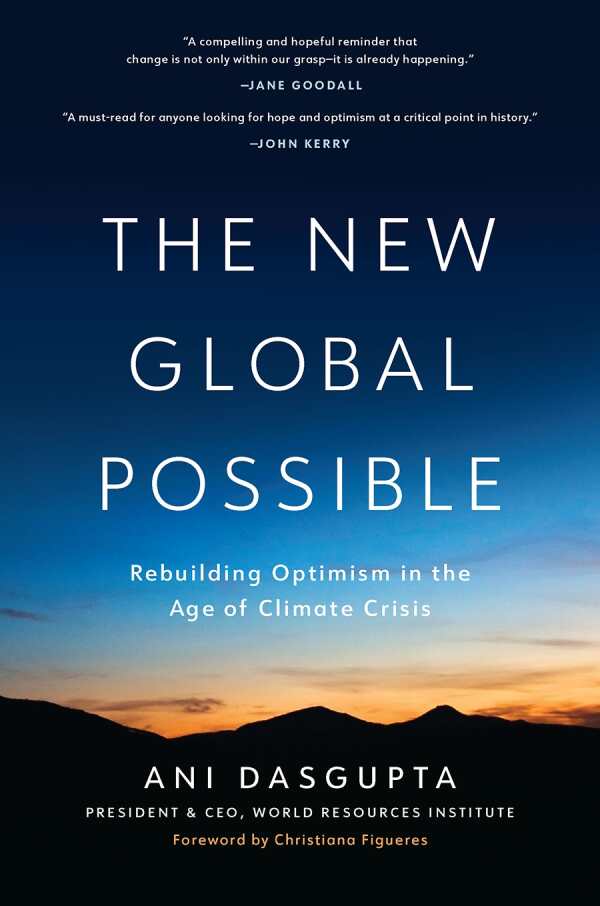The New Global Possible
Rebuilding Optimism in the Age of Climate Crisis
Tackling the complex issue of climate change, Ani Dasgupta’s The New Global Possible offers hopeful solutions.
The book’s optimistic introduction sets the stage for six fact-packed chapters documenting the climate crisis. Imperative-driven, the book focuses on topics including technological innovation and justice, communicating the urgent need to address critical global transformations. Some of the shocking statistics integrated into each chapter include the fact that 3.7 million hectares of forest were lost around the world in 2023—nearly ten soccer fields of forest per minute. Concrete, undeniable evidence of extreme climate change is presented, causing deep concern.
In some discussions, facts lead to a layered examination of related issues. For example, the number of people living in cities and slums and the high percentage of improper waste management are connected to larger problems like poverty. Although this perspective is essential for a holistic understanding and approach to the climate crisis, the multipronged analysis sometimes makes problem-solving feel daunting.
To counterbalance the realistic presentation of entrenched social roadblocks to environmental progress, a comprehensive history of how humanity arrived at this juncture is delineated. A discussion about the barriers preventing households and businesses from switching to renewable energy clarifies general interest in maintaining the status quo. Another section about permitting excessive heat to continue results in unsettling predictions about the ways Earth will respond—another wake-up call. But progress is acknowledged, too, as with accounts of top revenue-producing businesses developing solutions. The conclusion reinforces the theme of “orchestrating change for good” and provides hope that the recommended action plans can make a difference in protecting the planet.
In the climate change survey The New Global Possible, alarming trends are acknowledged alongside suggestions for necessary remedies.
Reviewed by
Andrea Hammer
Disclosure: This article is not an endorsement, but a review. The publisher of this book provided free copies of the book to have their book reviewed by a professional reviewer. No fee was paid by the publisher for this review. Foreword Reviews only recommends books that we love. Foreword Magazine, Inc. is disclosing this in accordance with the Federal Trade Commission’s 16 CFR, Part 255.

